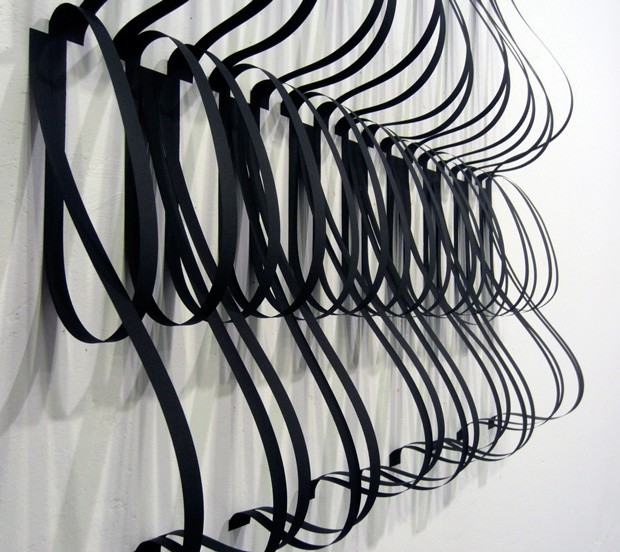Tensions in translation at the FOFA Gallery
In Montreal, things sometimes get lost in translation. But the ensuing confusion can make for great art.
The city’s unique linguistic culture has inspired Eva Brandl, Csenge Kolozsvári and Erika Adams, three artists who are currently showing their work at the FOFA Gallery’s January Rentrée. The exhibition draws on a variety of media that speak to modes of translation and the tensions inherent to what is at best an imperfect process.
In the main gallery, alumna and part-time instructor Brandl will present “BIRDS OF PREY they own the night / they own the day,” a work that combines larger-than-life photographs of taxidermy birds with sculptural objects that represent the sensoral powers of the predatory owls and hawks shown in the images.
These photos and objects play into the filters that inform our perception of other living things. In the exhibit, the birds, which at times seem otherworldly, are filtered through several lenses, among them those of taxidermy, photography, sounds emanating from aluminum cones and distorted reflections framed by metallic discs.
 “Untitled (Speculative Propositions)” (detail), Csenge Kolozsvári, 2013. | Photo courtesy of Csenge Kolozsvári
“Untitled (Speculative Propositions)” (detail), Csenge Kolozsvári, 2013. | Photo courtesy of Csenge Kolozsvári
The idea of filtering carries over to Kolozsvári’s installation in the Black Box. Sounds and images from a previous installation form the basis of “Untitled (Speculative Proposition),” a work that Kolozsvári, an MFA student in Studio Arts, calls visceral and experiential.
In it, she projects the image of herself walking across a tightrope onto the bottom of a glass aquarium. The sound, which reflects the tension of the rope, is transmitted through transducers attached to the same aquarium. The result is a cycle of filters, where the vibration from the sound rattles the water, which in turn distorts the projected image.
 “She said I have a French face” (detail), Erika Adams, 2013. | Photo courtesy of Erika Adams
“She said I have a French face” (detail), Erika Adams, 2013. | Photo courtesy of Erika Adams
Erika Adams, a full-time faculty member in Print Media, takes a more literal approach to language in “She said I have a French face,” a collection of paper-cut works on display in the York Corridor vitrines. The collection consists of two sets of pieces. In the first, Adams takes idioms and phrases from English, French and bilingual conversations and hole punches them into paper. The holes that have been punched out are collected and displayed on a small shelf. Adams then laser cuts paper and unfolds the pieces into sculptural objects, allowing the weight of the paper to determine where each is positioned on the wall.
Both of these approaches consider not only the form and function of the works themselves, but the spaces between them, too. Adams’s interest in these interstitial spaces is also mirrored in the language itself. “What is insinuated — body language, all the other signifiers — is just as important as what you actually say,” she says.
January’s artworks cover a lot of ground, gallery director jake moore says. She expects the show to leave a big impression on viewers: “They’ll have a sense of the breadth of the work we represent throughout the year.”
Rentrée Janvier 2014 will be exhibited at the FOFA Gallery in the Engineering, Computer Science and Visual Arts Integrated Complex (EV Building, 1515 Ste-Catherine St. W.) from January 6 to February 14, with a 5-à-7 vernissage on Thursday, January 9.
In other art news, the 2014 Concordia Remembers competition is now open for submission. Current MFA students are invited to present works that address the function of memory, invite retrospection and investigate the role of memorial through image. Up to four finalists will be shortlisted. The application deadline is March 3. Find out the technical requirements on the FOFA gallery website


